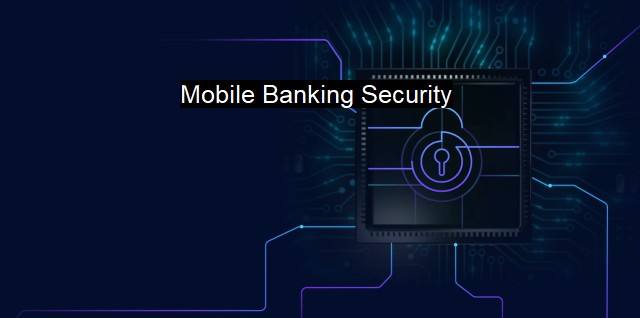What is Mobile Banking Security?
Ensuring Strong Mobile Banking Security: Exploring Cybersecurity and Antivirus Measures
Mobile banking security refers to the measures and methods used to protect financial transactions and activities conducted through mobile devices. These measures aim to prevent unauthorized access, misuse, modification, or denial of a mobile banking service. With constant advancement in technology, mobile banking is experiencing immense growth. Consequently, tackling security issues associated with mobile banking is emerging as a significant cybersecurity focus.An increase in mobile banking users has attracted cybercriminals, who exploit weak points in the network to gain access to personal data. Cybercriminals apply sophisticated methods to pursue their malicious ambitions, including malware, phishing, and man-in-the-middle attacks. Therefore, it becomes critical to attain high-security levels to enjoy the benefits of mobile banking.
Cybersecurity is a domain that focuses on protecting computers, servers, mobile devices, electronic systems, networks, and data from digital attacks. In the context of mobile banking, cybersecurity aims to safeguard your financial and personal data in the cyber realm. It ensures the confidentiality, integrity, and availability of your information while preventing unauthorized access, alteration, or destruction.
The need for mobile banking security rose with the convenience and popularity of mobile banking. Customers embraced the prospect of conveniently accessing banking services from anywhere and at any time through smartphones. this flexibility initiated new security challenges due to sensitive data involved and malign intents of hackers. Cybersecurity became the shield to counter these threats, focusing on establishing and implementing secure network systems, programs, and policies.
Such policies include multi-factor authentication, secure customer identification procedures, and encryption. Multi-factor authentication involves the validation of the user through more than one method, such as a password and a fingerprint or facial recognition. Secure customer identification procedures segregate genuine users from potential threats and impostors. Encrypted data transformation between the user and bank obstructs hackers from understanding the information even if they manage to intercept it.
Antivirus applications also play a significant role in mobile banking security. These software packages scan for, detect, and eliminate malicious software or files. One common threat in mobile banking is malware, short for malicious software, which refers to any software designed to harm or exploit any computing device or network. The two primary types of malware that impact mobile banking are spyware and trojans.
Spyware assists hackers in spying on individuals by collecting personal information without consent which can lead to identity theft. Trojans, on the other hand, disguise themselves as benign applications and, when downloaded and installed, launch attack on the target device or network. Cybersecurity specialists recommend regular updating of antivirus software to ensure the maximum potential for stopping the ever-evolving malware threats.
The primary goal of mobile banking security is to provide a secure environment for customers while performing banking operations and maintain their trust in digital banking. In fulfilling this objective, educating customers is integral. Unaware of threats, customers may unknowingly expose their financial data by responding to phishing emails, messages, or calls. Raising customer awareness about security risks and preventative steps is part of a holistic approach towards security.
Mobile banking security is a cybersecurity concern that ensures secure mobile financial transactions. Combining efforts between banks, cybersecurity teams, and individuals, it applies various methods such as multi-layer authentication, secure customer identification, encryption, and antivirus software to safeguard data. As hackers continue to look for exploitable opportunities, constant vigilance and up-to-date security measures are crucial. Mobile banking security not only protects consumers but as well the reputation of banks and the integrity of the national banking system.

Mobile Banking Security FAQs
What is mobile banking security?
Mobile banking security refers to the measures and technologies implemented to protect the confidentiality, integrity, and availability of financial data and transactions performed through mobile devices.What are the risks associated with mobile banking?
Mobile banking can expose users to threats such as phishing attacks, malware infections, Wi-Fi eavesdropping, stolen or lost devices, and fraud. These risks can lead to unauthorized access to accounts, data theft, identity theft, and financial losses.What are some best practices for mobile banking security?
Some best practices for mobile banking security include installing and updating antivirus software, using strong passwords or biometric authentication, avoiding public Wi-Fi networks, checking transaction history regularly, and reporting any suspicious activity immediately.How can banks ensure the security of their mobile banking apps?
Banks can ensure the security of their mobile banking apps by implementing secure coding practices, performing regular vulnerability assessments and penetration testing, using encryption and tokenization technologies, providing fraud detection and prevention mechanisms, and educating users about mobile banking security.| | A | | | B | | | C | | | D | | | E | | | F | | | G | | | H | | | I | | | J | | | K | | | L | | | M | |
| | N | | | O | | | P | | | Q | | | R | | | S | | | T | | | U | | | V | | | W | | | X | | | Y | | | Z | |
| | 1 | | | 2 | | | 3 | | | 4 | | | 7 | | | 8 | | |||||||